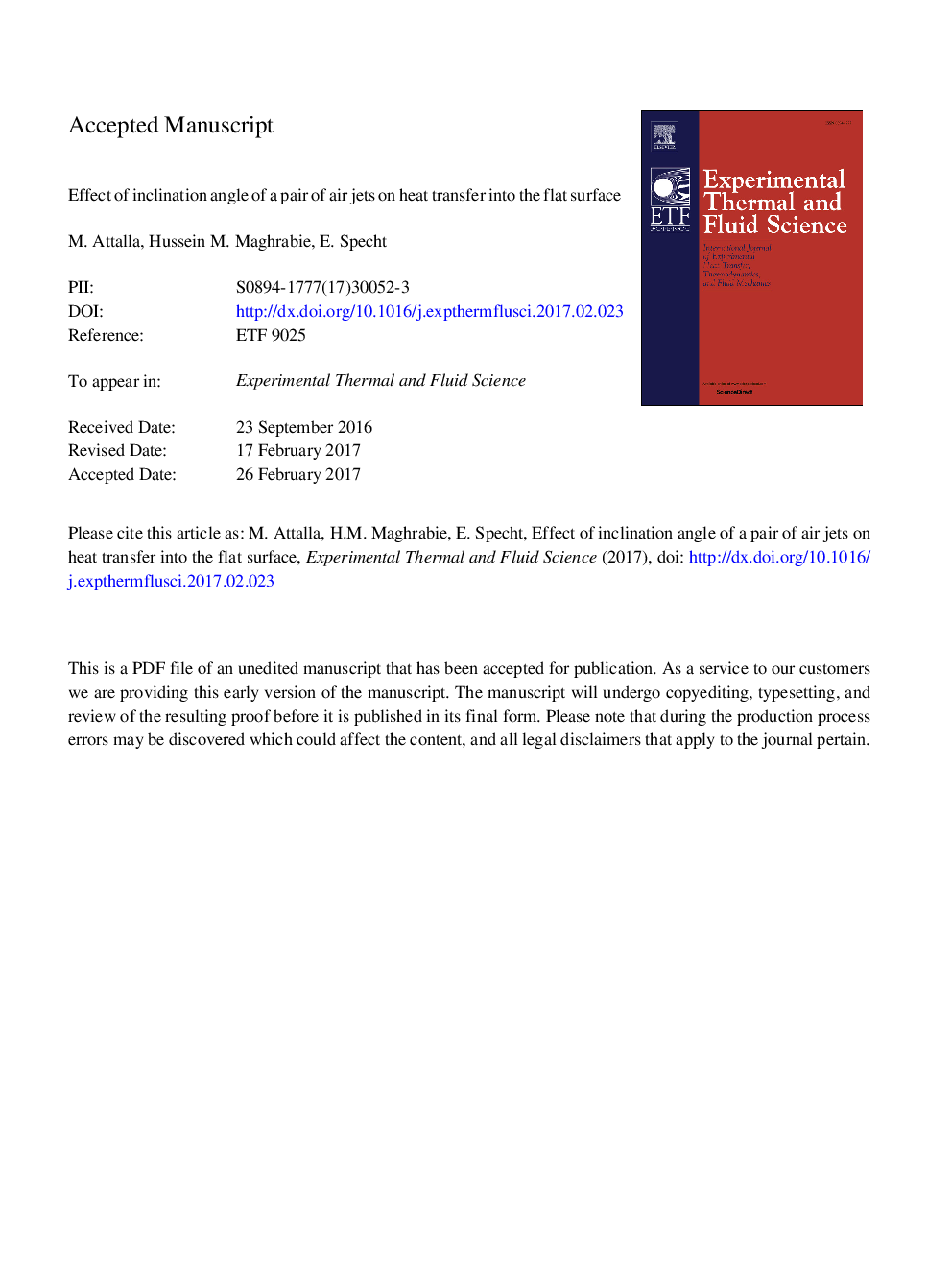| Article ID | Journal | Published Year | Pages | File Type |
|---|---|---|---|---|
| 4992656 | Experimental Thermal and Fluid Science | 2017 | 32 Pages |
Abstract
An experimental investigation is performed to study the effect of the inclination angle of air jets on heat transfer from a horizontal surface. A pair of inclined circular jets issuing from the straight pipes of length to diameter ratio of 40 is considered. The inclination angles of 0°, 10°, 20°, 30° 45°, and 60° are selected while the Reynolds number is varied from 10,000 to 40,000 based on a jet exit diameter. Jets to impingement plate distance (L/D) as well as the spacing distance (S/D) are changed from 2 to 8. The results of the temperature contours as well as the Nusselt number contours are illustrated to study the characteristics of heat transfer from a flat surface cooled by a pair of oblique jets. The experimental results show that the maximum magnitude of average heat transfer coefficient is achieved in the range of inclination angle from 10° to 20°. Empirical correlations are presented to predict the value of average Nusselt number as a function of Re, Pr, and θ. Moreover, a comparison between the values of average Nusslet number of the present study and those available in the literature is carried out.
Related Topics
Physical Sciences and Engineering
Chemical Engineering
Fluid Flow and Transfer Processes
Authors
M. Attalla, Hussein M. Maghrabie, E. Specht,
